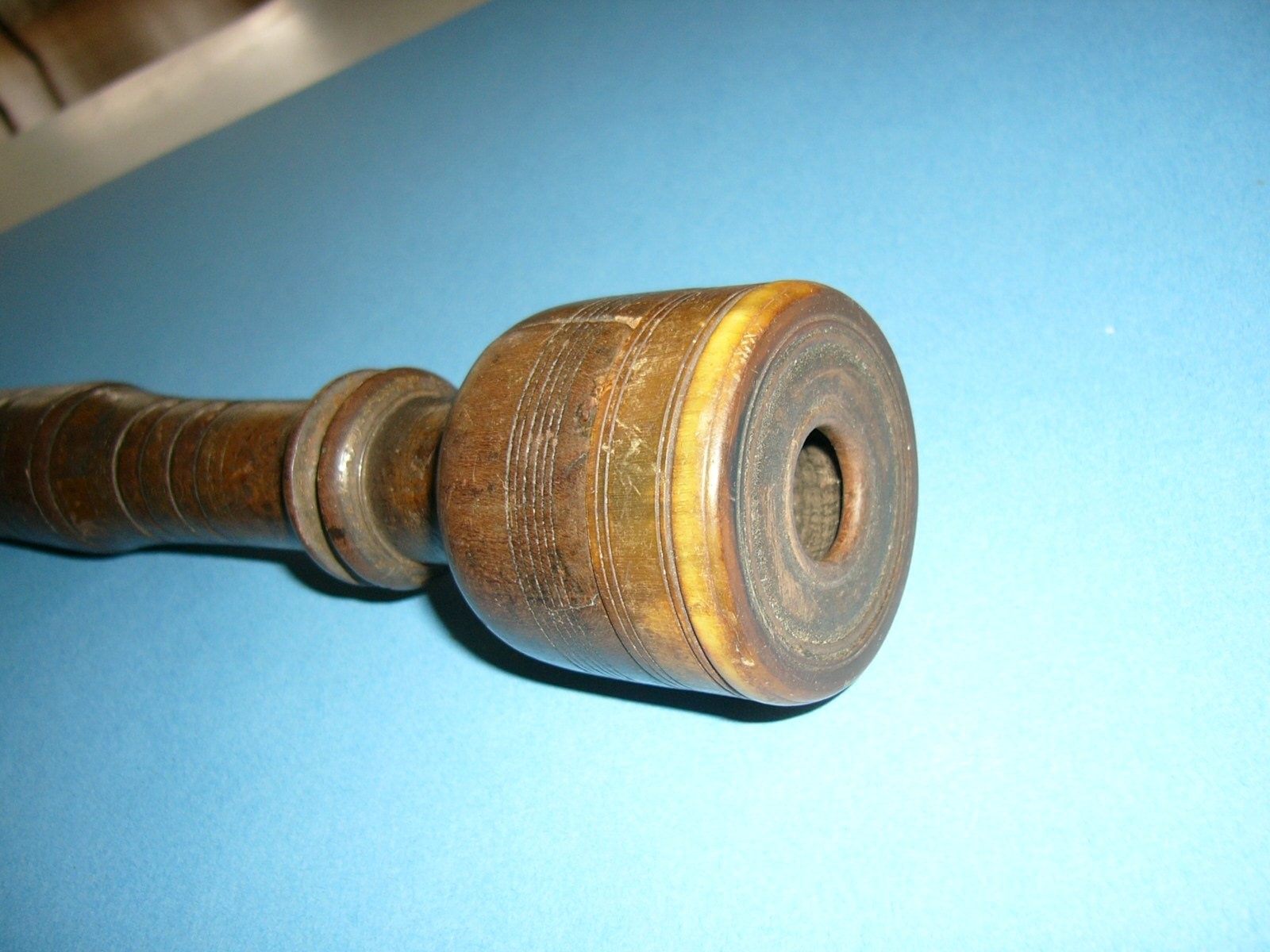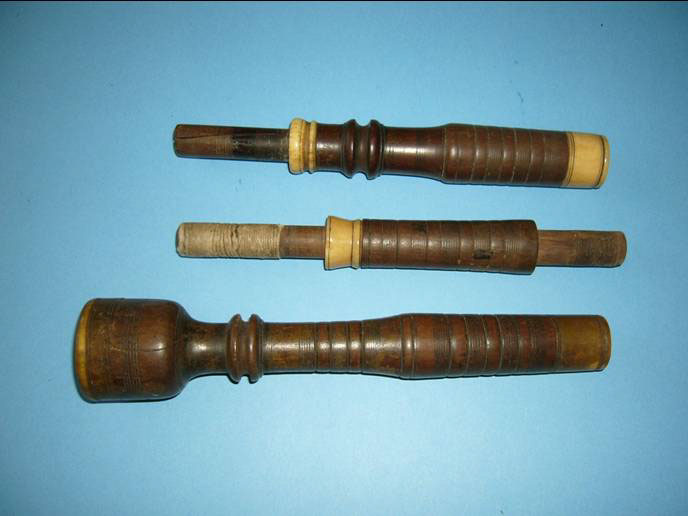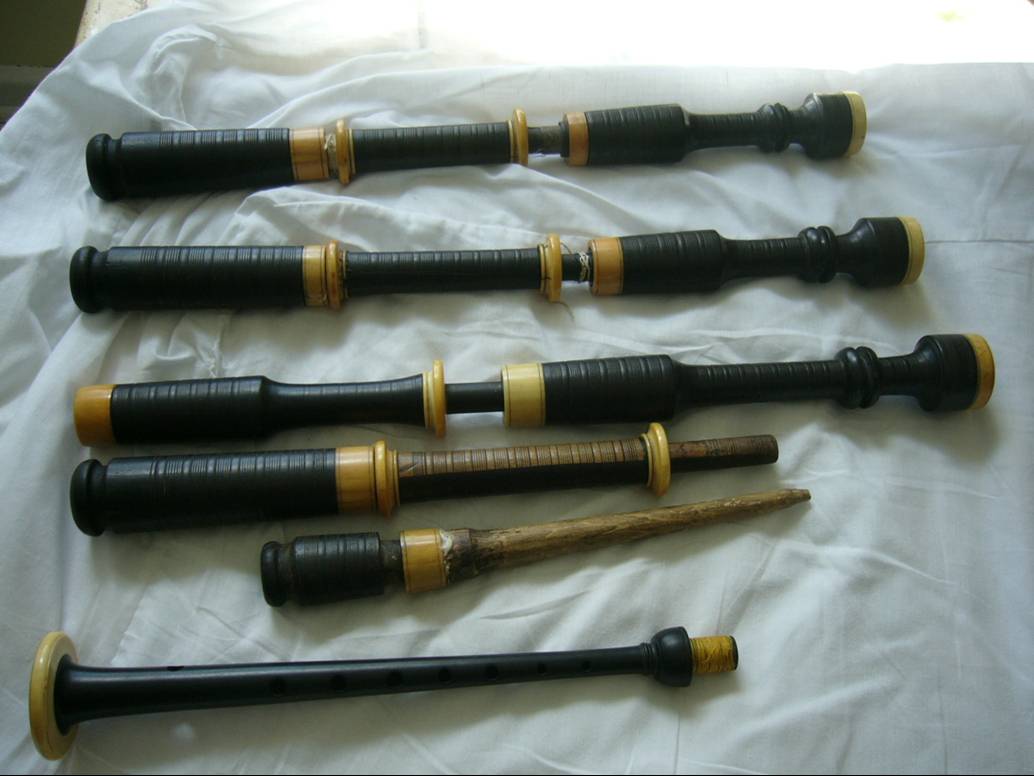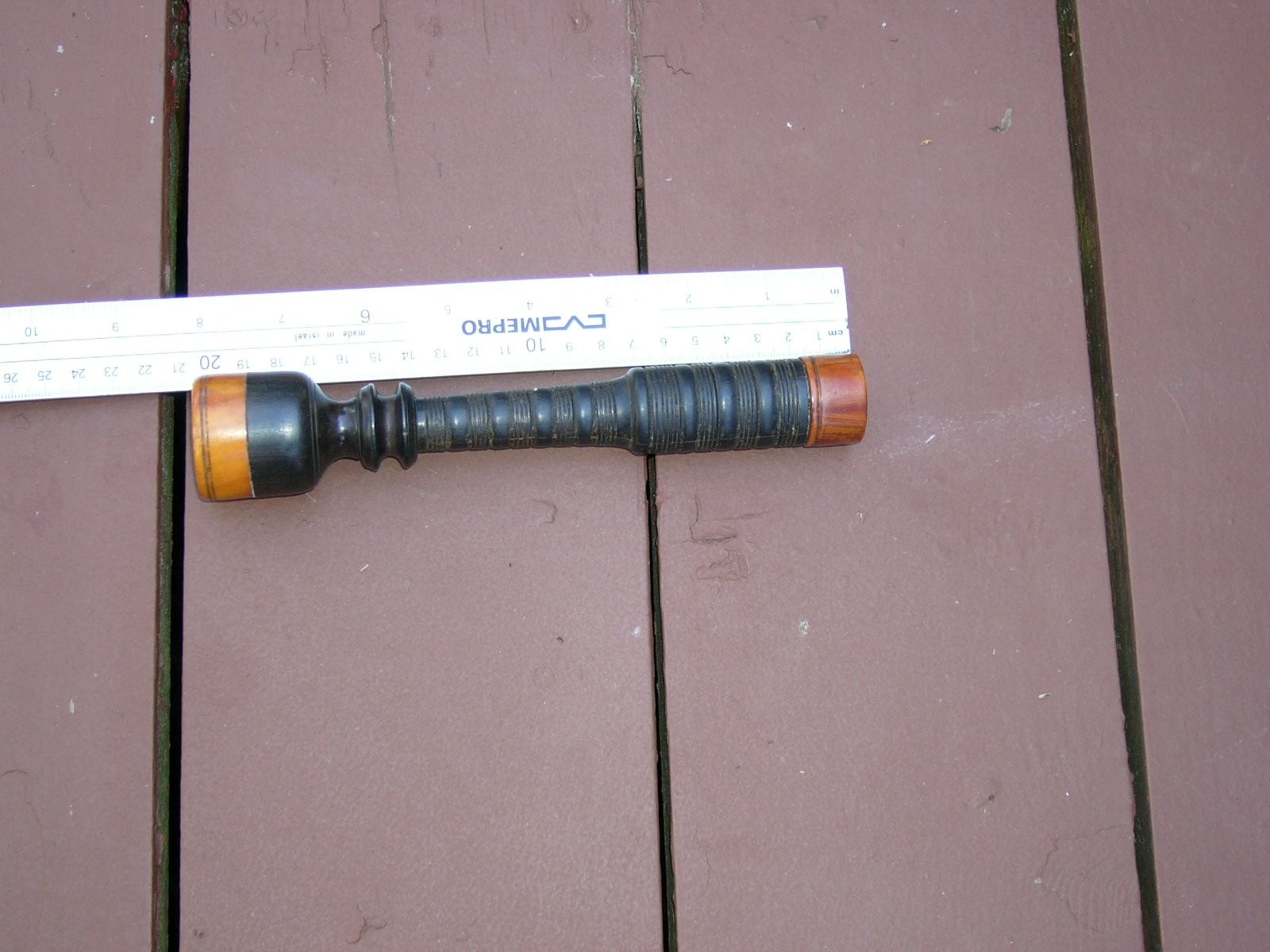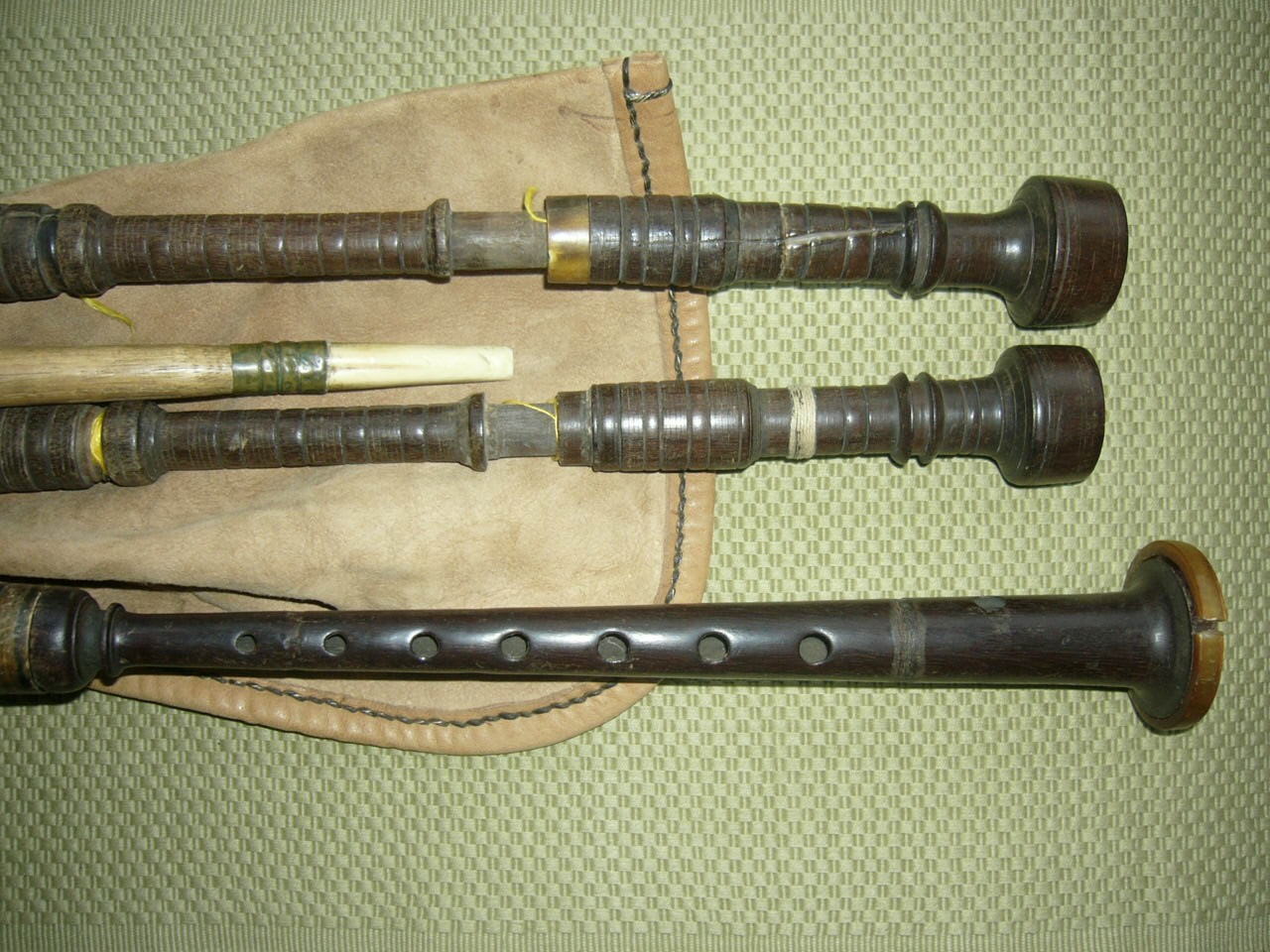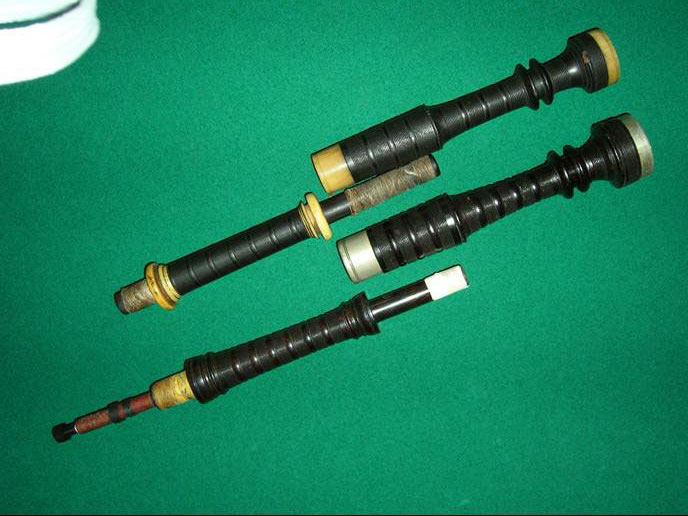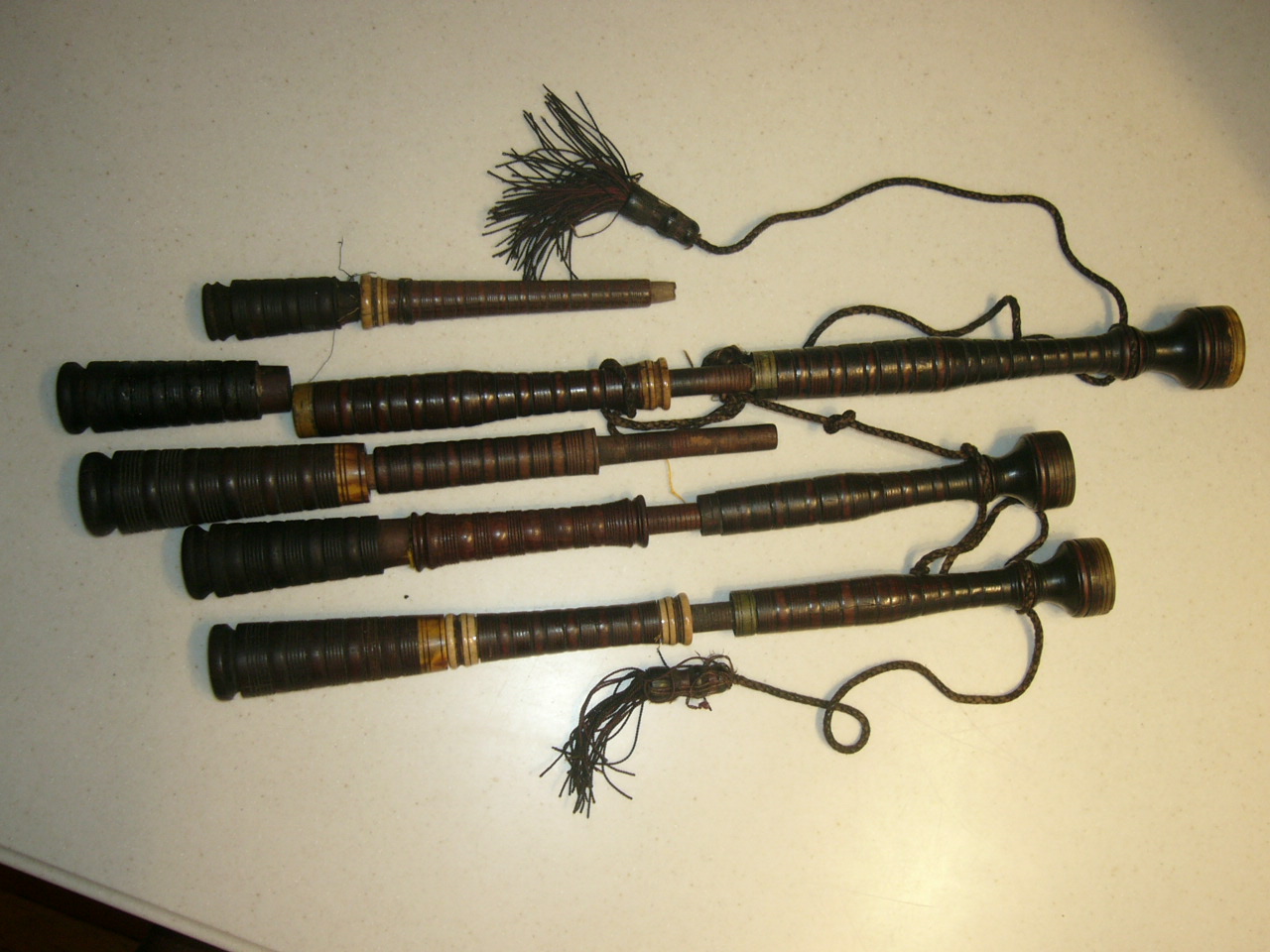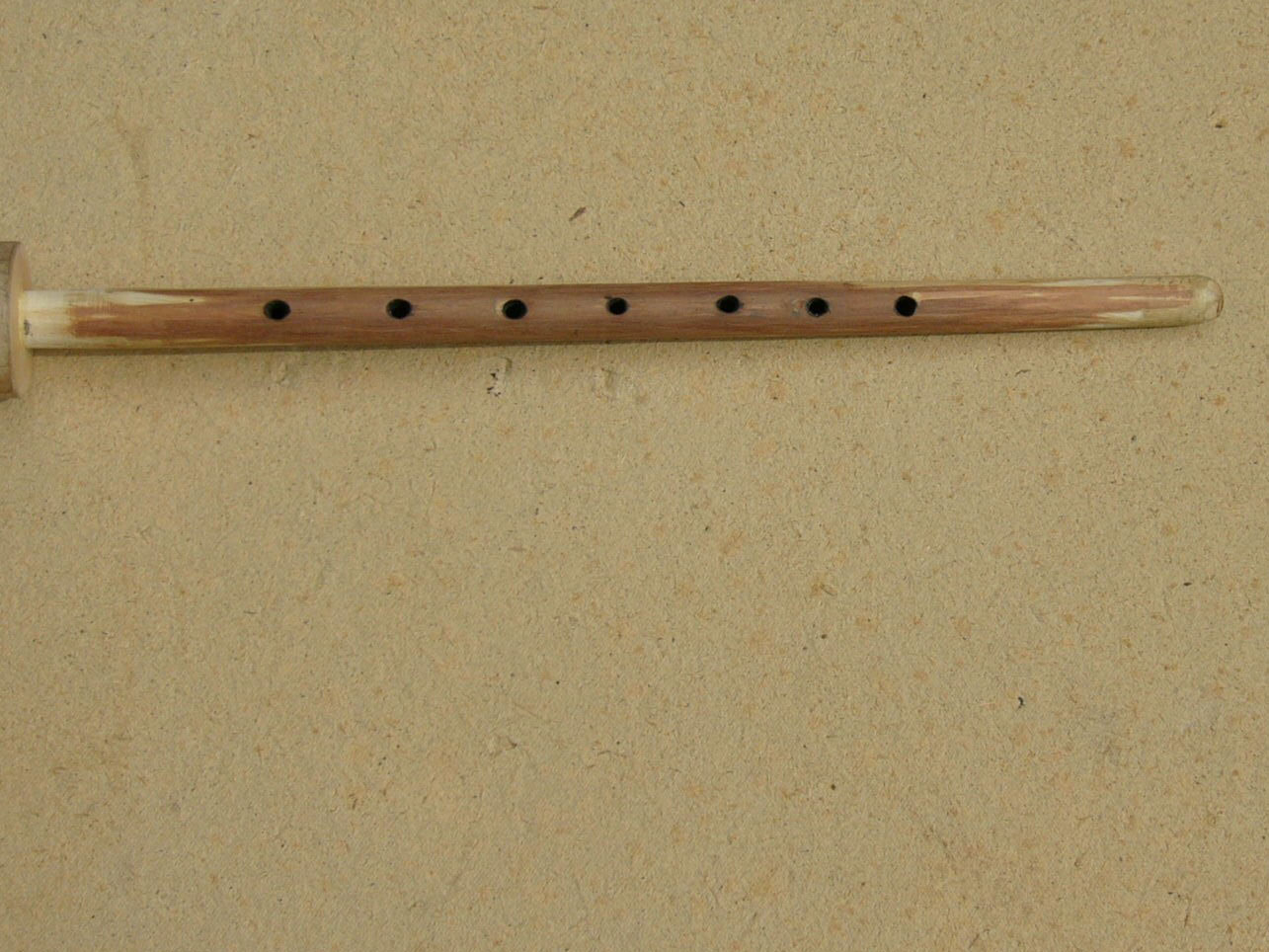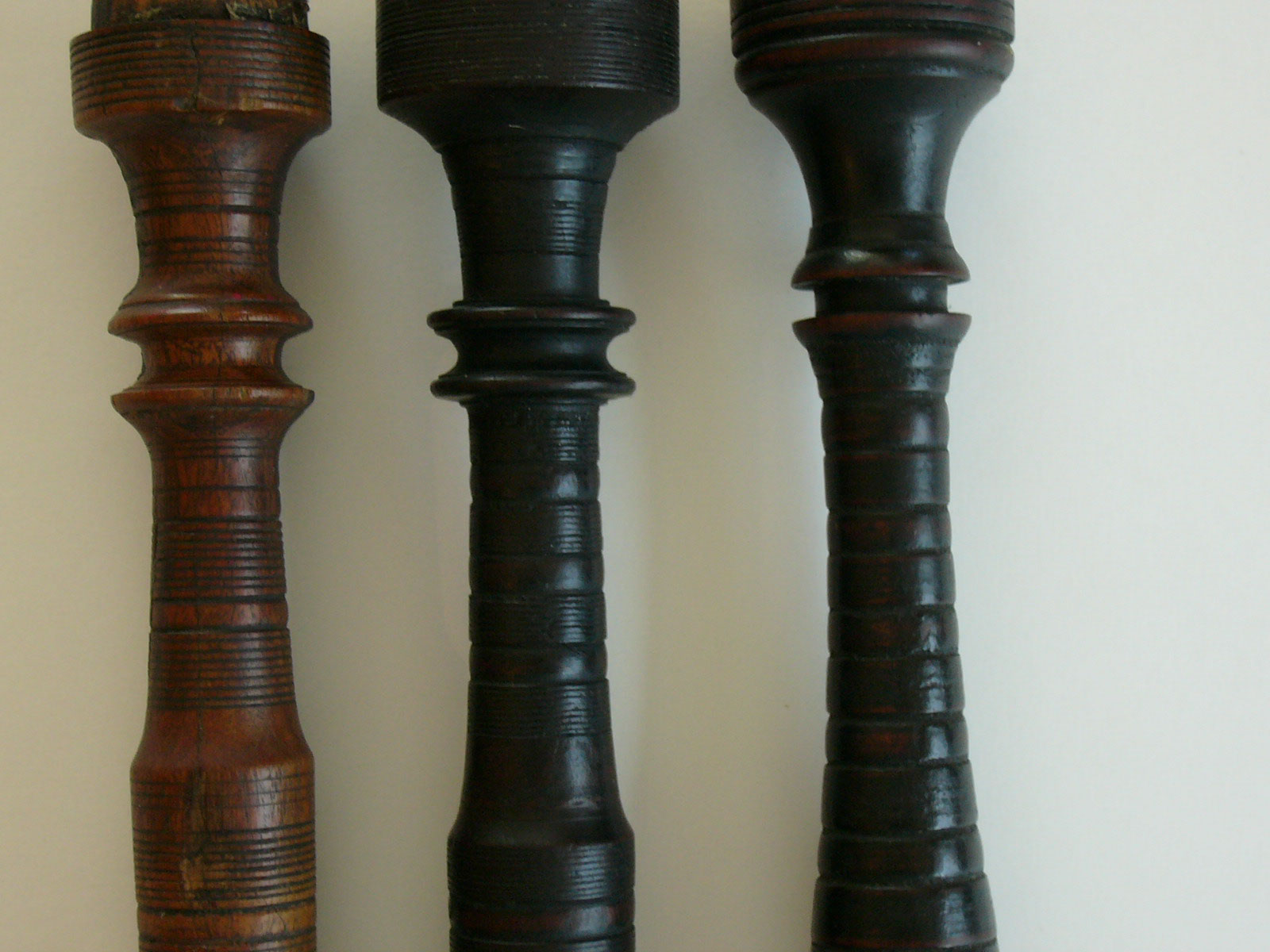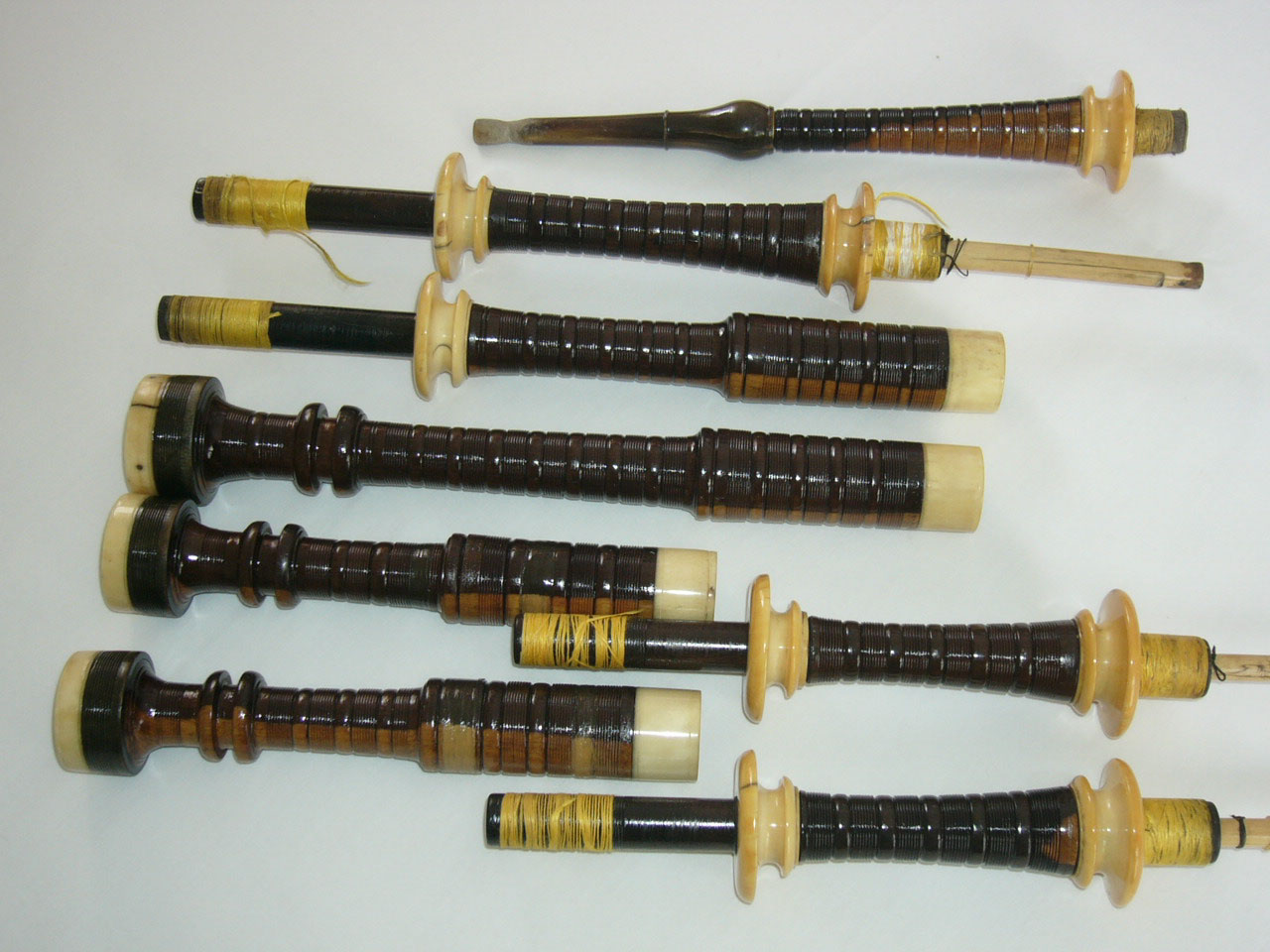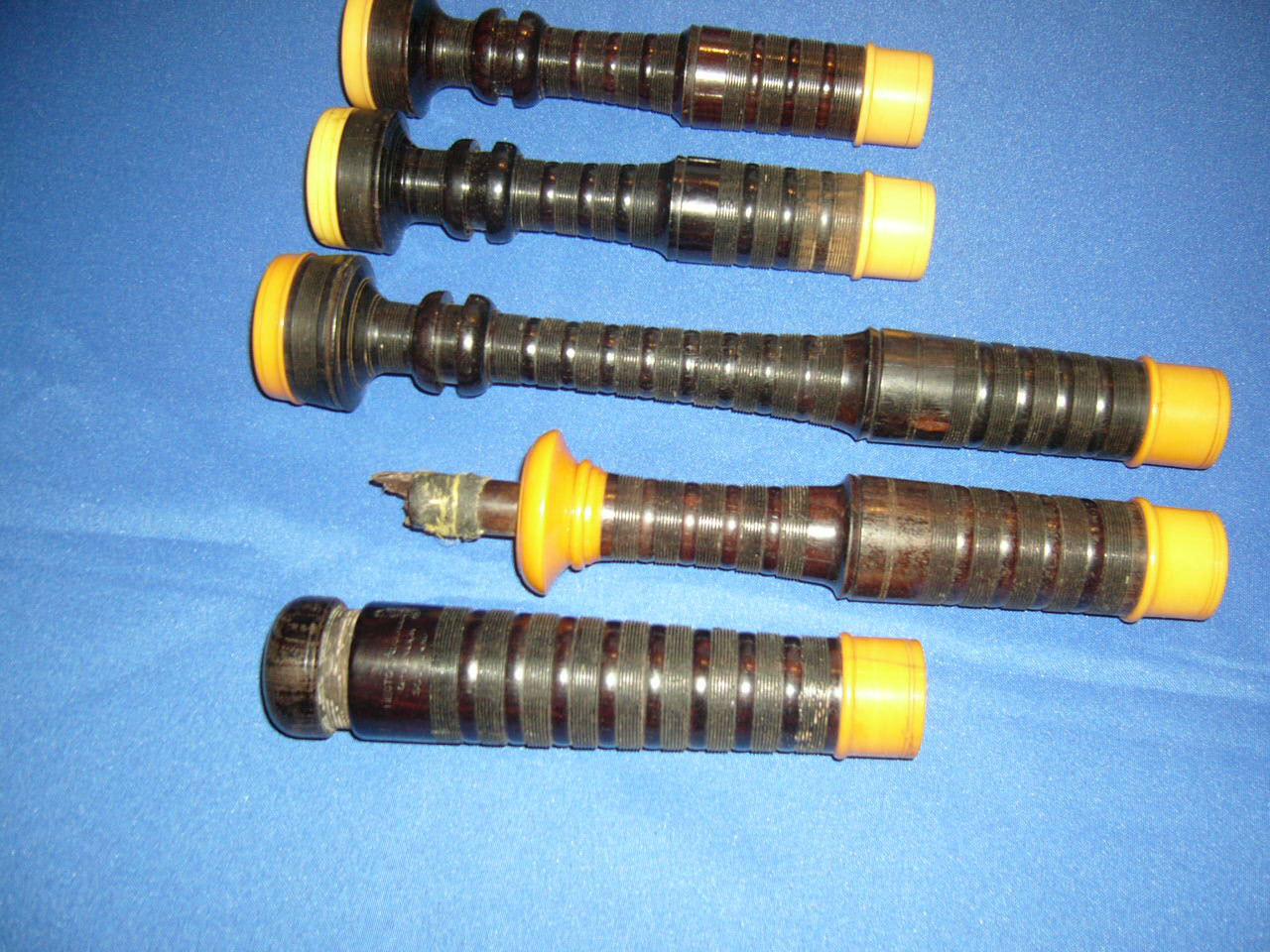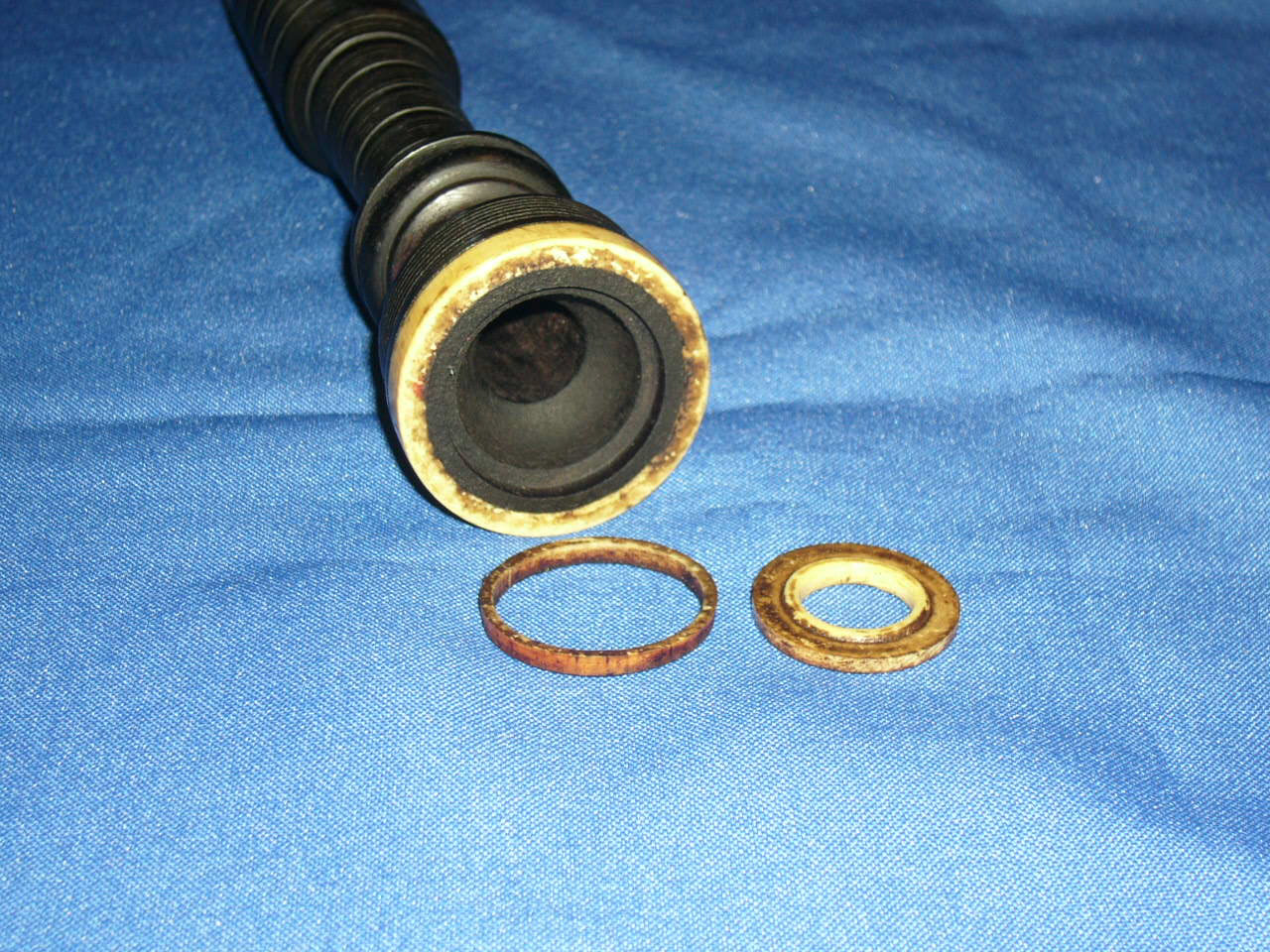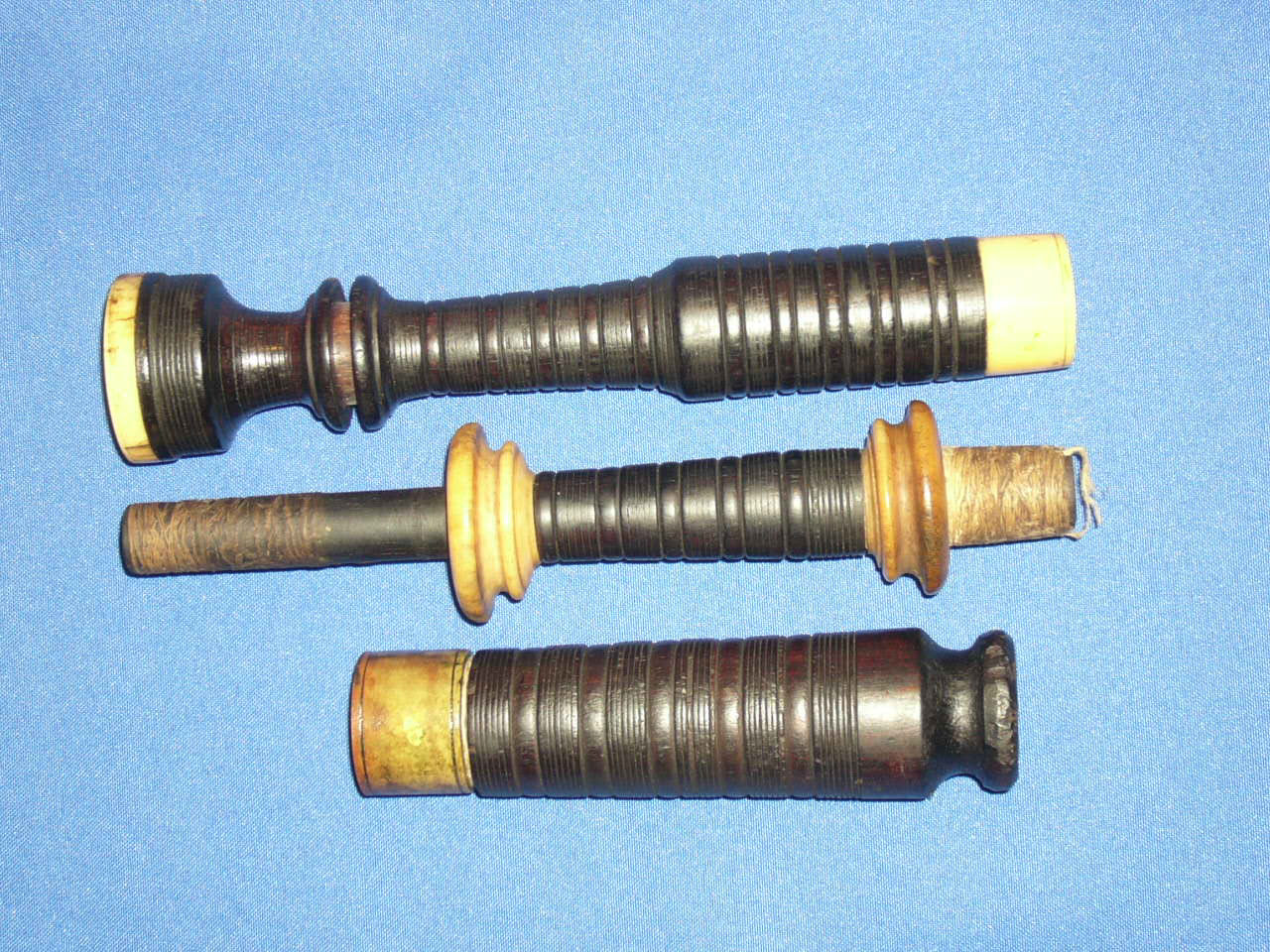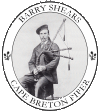Virtual Bagpipe Museum
Scottish Highland immigration to Nova Scotia covered the period 1773-1849. During this time approximately 50,000 Highlanders, most of them Gaelic-speaking, settled in northeastern Nova Scotia and Cape Breton.
Recent research has identified the names of over 80 pipers among this immigrant group and so it is not surprising to find several immigrant bagpipes held in private collections in the Province. Unfortunately most of the instruments bear no maker's mark and so attributing the bagpipe to a particular craftsman is impossible given the paucity of information available on bagpipe manufacture in Scotland in the 18th and early 19th centuries. From the surviving examples I have had an opportunity to examine it soon became clear that there were few standards when it came to bagpipe making in the period prior to 1800. The craft seemed to consist of many small or part-time manufacturers of instruments, local tradesmen who made only one or two sets for, or under the direction of, local pipers.
The photographs below depict just a few of the various styles of drone tops, projecting mounts, combing and beading, and drone configuration which, from the existing specimens, seem to have been common in the early days of bagpipe making in Scotland (and Nova Scotia) before standards for bagpipe manufacture were introduced in the first few decades of the 19th century. Although the craftsmen who actually made these instruments are unknown to us, we do have the dates when the instruments were brought to Nova Scotia for several of the sets. Genealogical studies for the families who currently own these bagpipes also indicate in which areas of Scotland these pipes were played in the days prior to immigration.
Also included below is a photograph of a locally made (a) practice chanter by the late Alex Currie (1910-1997) and a (b) set of pipes made by Duncan Gillis.
- To make the practice chanter a young maple tree was selected for its size and straightness and the bark was peeled off, and a red hot wire used to burn out the soft centre of the sapling. The next step involved marking the places for the finger holes and using the same wire to burn out the finger holes.
- Duncan Gillis used apple wood for his bagpipes and his skills at bagpipe making were celebrated in a song composed by one of the local Gaelic bards, Malcolm Gillis. There is a sample of handiwork in the College of Piping museum, Glasgow, Scotland. Seumas McNeill bought this particular set for 12.00 dollars from Allan C. MacDonald, Sydney, Cape Breton in the early 1960s when Seumas was teaching at the Gaelic College, St Anns, CB.
Click images to enlarge.
1. 18th century Bass drone top section from an immigrant bagpipe, most likely from Barra, maker unknown.
The style of the drone is not unlike the bagpipe depicted in the self-portrait of Joseph MacDonald found in his "Treatise" for the Highland bagpipe (compiled around 1760).
Here is another view of the drone above, this time the complete bass drone. Note the cord channels on the mid-joint of the bass drone, as well as at the top.
2. An immigrant bagpipe, maker unknown. This bagpipe was brought to Cape Breton c. 1820.
The chanter is a modern addition made by David Glen, Edinburgh, the blowpipe a homemade replacement.
3. 18th century tenor drone top, maker unknown.
This is part of an instrument which was brought from South Uist to Cape Breton in the 1840s.
4. Two-droned bagpipe, maker unknown.
This instrument was brought from Scotland to Cape Breton in 1807. It later had a bass drone added turned in a totally different style. Judging by the chanter, the bagpipe probably dates to the second half of 18th century.
5. 18th century bass drone top section, maker unknown. This bagpipe belonged to Robert Ross, the first documented bagpipe maker in North America. Ross immigrated from the North of Scotland to Pictou, Nova Scotia around 1817.
When he died in 1843 he "bequeathed his tools for making bagpipes to his son Alexander".
6. Tenor drone tops, horn and bone mounts, possibly late 18th century, maker unknown.
These pipes were reputed to have been played at the battle of Waterloo, 1815 but their overall style suggests a much earlier date of manufacture. There are several sets or parts of bagpipes reputed to have been played at Waterloo in Cape Breton.
7. Two drone sections: the upper drone is from an immigrant set which came to Cape Breton around 1810. The bottom drone is by David Glen, c. 1905. Notice the thicker "army pattern" style of the Glen tenor drone top.
8. Duncan Gillis bagpipes, apple wood, c 1910. Duncan Gillis made bagpipes part –time from 1886-1920 in Cape Breton. The blowpipe in this photograph is from an immigrant bagpipe from South Uist and one tenor bottom section is a recent copy.
The drone stocks are tapered on both the outside and inside; the mounts are brass, bone and horn. Gillis usually made bagpipes with 2 tenor drones, adding a bass drone only when requested to do so.
9. Home-made practice chanter, maple wood, 1995. Alex Currie made this chanter for me in 1995.
He learned this skill from his father, Peter Currie, and over his lifetime Alex made dozens of these chanters for beginner pipers. The chanter has a very good scale except for the Low G which is off by a semi-tone (flat).
10. Three locally turned tenor drone sections, late 19th century. Notice the different styles of cord channels, combing and beading.
11. John C Cameron bagpipes, mid 19th century, cocus wood. John Campbell Cameron (1798-1859) was a Dundee based regimental bagpipe maker who made bagpipes from about 1839 to about 1859. He stamped this set, J C Campbell, just above the ferrule on several of the drone sections.
12. A two droned immigrant bagpipe from Antigonish, Nova Scotia, c. 1810, maker unknown. Antigonish County was settled largely by Scottish Gaels from the Scottish mainland including areas such Knoydart, Arisaig, Morar, Lochaber and Strathglas.
13. Hector Russell, Greenock, Scotland, c. 1950. These few pieces were made by the bagpipe making firm of Hector Russell. The makers name is stamped on the bass drone stock. The bores resemble Henderson bagpipes of the same period.
14. Immigrant tenor drone, Scottish, c.1815, maker unknown. Two close-ups of a tenor drone. Notice the large bone mounts on the bottom section, the brass ferrule on the stock, the cup-shaped flair of the bell interior, and the precise turning of the two-parted bone/ivory bushing. – certainly not the workmanship of an amateur.

